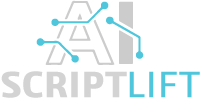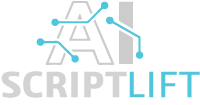
Optimizing Blog Post Structure with AI Insights
In today’s fast-paced digital landscape, crafting compelling and well-structured blog content is essential for capturing audience attention and improving search engine visibility. Optimizing blog post structure with AI insights has become a game-changer for content creators aiming to enhance readability, engagement, and SEO performance. By leveraging advanced algorithms and data-driven strategies, AI can analyze user behavior, identify content gaps, and suggest improvements that align with search engine best practices. Our platform, a cutting-edge solution that uses artificial intelligence to generate personalized and interactive AI companions, empowers users to create smarter content strategies. With features designed to streamline content creation and optimize blog formatting, our AI-driven tools help ensure your posts are not only informative but also rank higher in search results. Whether you’re a seasoned blogger or just starting out, integrating AI insights into your blog structure can significantly boost your online presence and audience retention.
Understanding the Importance of Blog Post Structure
A well-structured blog post is more than just aesthetically pleasing—it’s a strategic asset that significantly impacts readability, user engagement, and SEO performance. Structuring your blog content effectively ensures that readers can easily navigate your ideas, while search engines can better understand and rank your content. According to a study by Nielsen Norman Group, users typically read only 20-28% of the words on a web page, emphasizing the need for scannable and organized content.
“A clear structure not only improves user experience but also boosts your blog’s visibility on search engines.”
AI-powered tools are now playing a pivotal role in optimizing blog post structure. These tools analyze user behavior, keyword placement, and content flow to recommend the most effective layout. For instance:
- Using AI to determine optimal heading hierarchy (H1, H2, H3) for better SEO.
- Analyzing readability scores to ensure content is accessible to a broader audience.
- Identifying keyword-rich sections to enhance search engine indexing.
For businesses aiming to stay competitive, leveraging AI in content creation is no longer optional. Explore how AI is transforming content creation and why AI is essential for business blogging.
Additionally, a well-structured blog post increases dwell time and reduces bounce rates—two critical factors for SEO success. Learn more about the evolving role of AI in digital marketing from trusted sources like Moz and Neil Patel. For more insights, visit our blogs section.
How AI Analyzes Reader Behavior and Engagement
Artificial Intelligence (AI) is transforming how bloggers understand and respond to reader behavior. By analyzing metrics such as scroll depth, time spent on page, click-through rates, and bounce rates, AI tools can identify which sections of a blog post capture the most attention and which ones cause readers to disengage. These insights allow content creators to refine their blog structure, ensuring that key messages are delivered at optimal points and that content flows in a way that keeps readers engaged.
AI also uses natural language processing (NLP) to assess sentiment and intent, helping bloggers tailor their tone and messaging to better resonate with their audience. This level of personalization not only improves user experience but also boosts SEO performance by increasing dwell time and reducing bounce rates. For example, AI can suggest repositioning calls-to-action or reformatting paragraphs to enhance readability and engagement.
Moreover, integrating AI into your content strategy enables continuous improvement. By regularly analyzing engagement data, bloggers can adapt their content to align with evolving reader preferences. To explore more about how AI is shaping the future of content, visit our blogs section or read about the benefits of AI in digital content strategy. Leveraging AI insights ensures your blog remains relevant, engaging, and optimized for both readers and search engines.
Crafting Compelling Introductions with AI Assistance
A strong blog post introduction is essential for capturing reader attention and setting the tone for the content that follows. With the help of AI, crafting engaging and relevant introductions has become more efficient and impactful. AI tools can analyze trending topics, user intent, and keyword relevance to generate opening paragraphs that resonate with your target audience. These intelligent systems not only suggest compelling hooks but also ensure that the introduction aligns with SEO best practices, increasing visibility and reader retention.
By leveraging AI-generated insights, bloggers can tailor their introductions to match the tone and expectations of their audience, whether it’s informative, persuasive, or conversational. This personalized approach enhances the reader’s experience and encourages them to continue reading. Additionally, AI can help identify the most effective structure and language patterns, ensuring that your introduction is both clear and persuasive.
For businesses looking to stay ahead in the digital space, understanding how AI enhances content creation is crucial. Explore more about how AI is transforming content creation and its role in shaping modern blogging strategies. You can also visit our blogs section for more insights into optimizing your content strategy. Embracing AI in the early stages of your blog post not only saves time but also sets a strong foundation for a well-structured and engaging article.
Enhancing Readability Through AI-Driven Formatting
Artificial Intelligence is playing a transformative role in improving the readability of blog content by automating formatting decisions that enhance user experience. Through intelligent analysis of sentence structure, paragraph length, and keyword distribution, AI tools can restructure content to ensure it flows logically and remains engaging. This not only helps readers absorb information more efficiently but also reduces bounce rates and increases time spent on the page—key metrics for SEO success.
AI-driven formatting tools can identify and correct inconsistencies in tone, highlight important points with bullet lists or headings, and even suggest optimal placement for images and multimedia. These enhancements make blog posts more visually appealing and easier to scan, which is crucial in today’s fast-paced digital environment. Additionally, AI can tailor formatting based on audience behavior, ensuring content resonates with target readers.
For businesses looking to stay competitive, leveraging AI for formatting is no longer optional—it’s essential. Learn more about how AI is transforming content creation and why it’s a game-changer for digital strategies. You can also explore our latest insights on AI-powered blogging techniques to further enhance your content strategy. By integrating AI into your blog structure, you not only improve readability but also boost your site’s overall performance and visibility.
Using AI to Optimize Headings and Subheadings
Crafting compelling headings and subheadings is essential for capturing reader attention and improving blog readability. With the help of AI, content creators can now generate optimized headings that not only engage readers but also align with search engine algorithms. AI tools analyze keyword trends, user intent, and readability metrics to suggest titles and subheadings that enhance SEO performance and user experience. These tools can identify which phrases resonate most with your target audience, ensuring that your content ranks higher and attracts more organic traffic.
By leveraging AI, bloggers can maintain consistency in tone and structure while ensuring that each section of their post contributes to the overall narrative. This structured approach helps readers navigate content more easily, increasing time spent on the page and reducing bounce rates. Additionally, AI can recommend variations of headings based on performance data, allowing for continuous optimization.
For businesses looking to stay ahead in the digital space, integrating AI into their content strategy is no longer optional. Discover more about how AI is transforming the way we write in our article on content creation. You can also explore our full range of insights by visiting our blogs section. Embracing AI-driven tools ensures your blog structure is not only reader-friendly but also primed for search engine success.
Leveraging AI for SEO-Friendly Content Layout
Artificial Intelligence (AI) is transforming the way content is structured for maximum SEO impact. By analyzing user behavior, search intent, and keyword trends, AI tools can help bloggers and content creators design layouts that are both user-friendly and search engine optimized. These tools suggest optimal heading structures, paragraph lengths, and keyword placements, ensuring that every element of a blog post contributes to better visibility and engagement.
AI-driven insights also assist in organizing content hierarchies, making it easier for readers to navigate and for search engines to index. For instance, AI can recommend where to place internal links, how to format subheadings, and which multimedia elements to include for enhanced readability. This not only improves the user experience but also boosts dwell time and reduces bounce rates—two critical factors in SEO performance.
Moreover, integrating AI into your content strategy allows for real-time optimization. As algorithms evolve, AI tools adapt quickly, ensuring your blog structure remains aligned with the latest SEO standards. For a deeper understanding of how AI is reshaping digital content, explore our article on AI in digital content strategy or browse more insights on our blogs page. Embracing AI not only streamlines your content creation process but also ensures your blog posts are primed for search engine success.
Measuring the Impact of AI-Optimized Structures
To truly harness the potential of AI in blog post structuring, it’s essential to measure its impact through data-driven insights. AI-optimized structures are designed to enhance readability, improve SEO performance, and increase user engagement. By analyzing key performance indicators such as bounce rates, average time on page, and click-through rates, businesses can determine how effectively AI is enhancing their content strategy.
One of the most significant advantages of using AI is its ability to adapt content layout based on user behavior and search engine algorithms. This dynamic optimization ensures that blog posts are not only informative but also strategically positioned for maximum visibility. Tools powered by AI can track how readers interact with different sections of a blog, allowing content creators to refine their approach continuously.
Moreover, businesses that integrate AI into their content workflows often see measurable improvements in organic traffic and keyword rankings. For a deeper understanding of how AI is transforming content strategies, explore our article on AI in digital content strategy. Additionally, discover how AI is transforming content creation to align with evolving audience expectations.
By consistently evaluating these metrics, organizations can fine-tune their blog structures, ensuring that every post not only reaches its target audience but also delivers meaningful engagement.
In conclusion, optimizing your blog post structure with AI insights is a powerful way to enhance readability, engagement, and SEO performance. By leveraging AI tools to analyze user behavior, content trends, and structural patterns, bloggers can create more effective and compelling content. Whether it’s through improved headline generation, strategic keyword placement, or better formatting, AI offers data-driven guidance that helps your posts resonate with your audience. As technology continues to evolve, integrating AI into your content strategy is no longer just an advantage—it’s becoming essential for staying competitive in the digital landscape. Embrace these insights to craft smarter, more impactful blog posts that truly connect with your readers.

